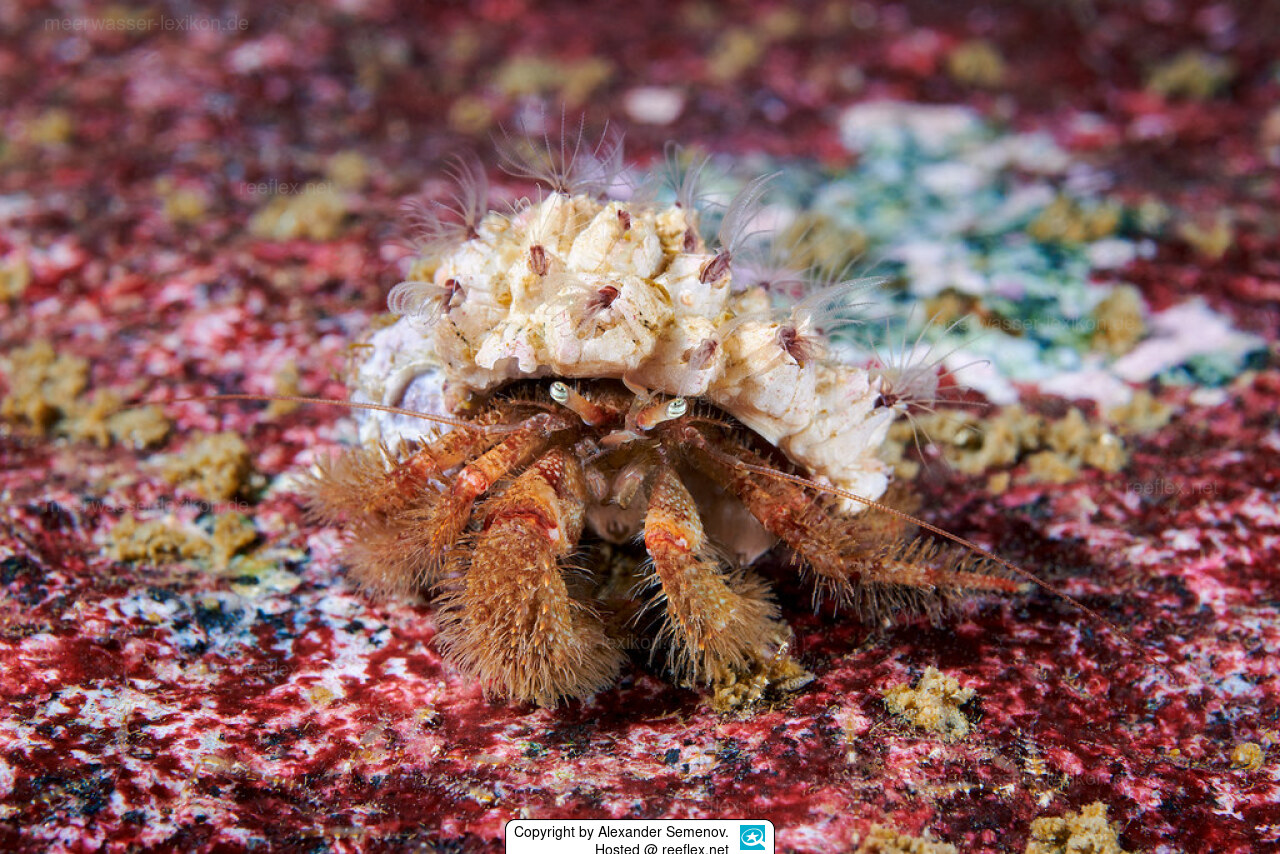Info
Pagurus parvispina Komai, 1997
The hermit crab Pagurus parvispina was found in Vostok Bay (Peter the Great Bay, Sea of Japan) at a depth of 50-65 m. This species was previously recorded with the type locality in northern Japan (Esan, southern Hokkaido) at a depth of 150–200 m. The discovery of Pagurus parvispina in Vostok Bay was the first record in Russian waters and significantly expanded the range of this species in the Sea of Japan.
Discorsopagurus maclaughlinae Komai, 1995 occurs in Russian waters and was previously identified as the tubeworm hermit crab Orthopagurus schmitti.
Etymology. The specific epithet is a noun in apposition from Latin parvus (small) and spina and refers to the possession of teeth on the edge of the scissor arms. Remarkable individual differences were observed in the number of these teeth/thorns. The number varies greatly between three and 25.
The shield is mottled brown, the eyestalks are completely brown, the claws are mottled light brown. The legs have a brown base color.
Size: Males have a shield length SL of 11.2 mm, females remain somewhat smaller with a shield length of SL 10.0 mm. There is no pronounced sexual dimorphism.
These hermit crabs inhabit the shells of Fusitriton oregonensis (Cymatiidae) and Buccinum isaotakii Kira (Buccinidae).
The hermit crab Pagurus parvispina was found in Vostok Bay (Peter the Great Bay, Sea of Japan) at a depth of 50-65 m. This species was previously recorded with the type locality in northern Japan (Esan, southern Hokkaido) at a depth of 150–200 m. The discovery of Pagurus parvispina in Vostok Bay was the first record in Russian waters and significantly expanded the range of this species in the Sea of Japan.
Discorsopagurus maclaughlinae Komai, 1995 occurs in Russian waters and was previously identified as the tubeworm hermit crab Orthopagurus schmitti.
Etymology. The specific epithet is a noun in apposition from Latin parvus (small) and spina and refers to the possession of teeth on the edge of the scissor arms. Remarkable individual differences were observed in the number of these teeth/thorns. The number varies greatly between three and 25.
The shield is mottled brown, the eyestalks are completely brown, the claws are mottled light brown. The legs have a brown base color.
Size: Males have a shield length SL of 11.2 mm, females remain somewhat smaller with a shield length of SL 10.0 mm. There is no pronounced sexual dimorphism.
These hermit crabs inhabit the shells of Fusitriton oregonensis (Cymatiidae) and Buccinum isaotakii Kira (Buccinidae).







 Alexander Semenov, Russland
Alexander Semenov, Russland































